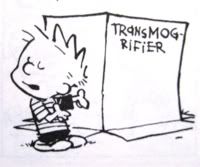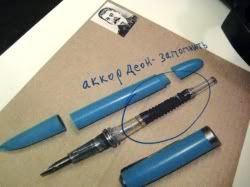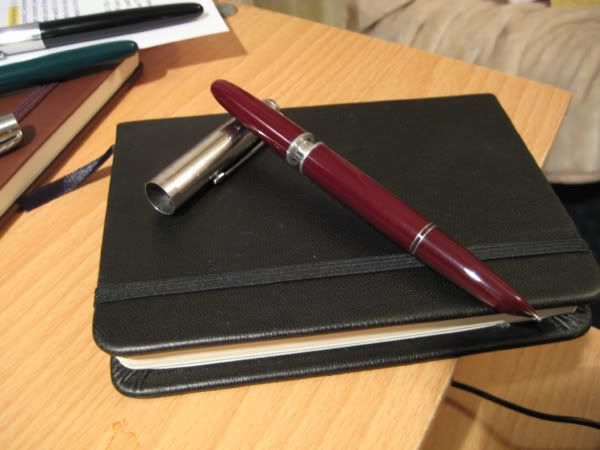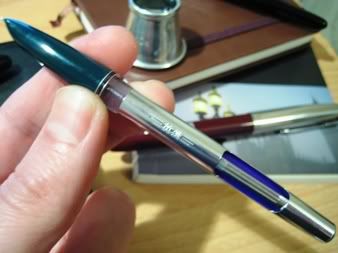If you are interested in trying this for yourself, don't be put off by the dragging narrative in this introduction - skip straight past it. This was a very low budget modification that needed few parts and quite basic tools to carry out :-). I've split this guide into the following steps:
- This background introduction.
- A (very short!) list of parts needed and tools to use.
- Cutting the blind cap.
- Swapping the silicon ink sac for a latex ink sac.
- Transmogrifying the steel press-bar unit into a button filler unit.

As much as I enjoy writing with the Hero 616 Jumbos, I'm part of the majority that don't particularly like the press bar assembly they use to fill the pens with ink. This involves removing the barrel, immersing the nib in an ink bottle, and squeezing the tiny bar on the sac guard. And squeezing the tiny bar on the sac guard. And squeezing the tiny bar on the sac guard...
That was never going to be the end of the story! I wanted to try something a bit more involving. To quote Glinn, "If I didn't like messing with things and getting my fingers dirty, I would use a ball-point!". My interest in these pens started with Jim Mamoulides' article on modern Parker 51 clones. Understandably, none are vacuum fillers - it's too expensive and complex a system to replicate, especially at their price point. I would have to look further for inspiration...
 My imagination was fired by Ernst Bitterman's article on the Soviet refusal to allow a 51 gap, manufacturing crude yet effective accordion filling 'Soyuz' pens. This was closer to what I wanted to attempt - something that could emulate the vacumatic's functionality, using inexpensive parts and techniques available to the dilettante.
My imagination was fired by Ernst Bitterman's article on the Soviet refusal to allow a 51 gap, manufacturing crude yet effective accordion filling 'Soyuz' pens. This was closer to what I wanted to attempt - something that could emulate the vacumatic's functionality, using inexpensive parts and techniques available to the dilettante.Then I remembered reading that as well as the press bar filling aeromatic and exotic vacumatic models, for a fleeting production run Parker made a button filling 51. I'd no experience with button fillers, but noticed to my surprise that the essential component - the pressure bar - is still being manufactured, and they are pretty cheap on eBay too. The 51 'red band' filler used a conventional ink sac and pressure bar arrangement. It also had a failure rate worthy of Microsoft's X-Box, which was both off putting and liberating - unconstrained by the original, I'd strike a new path, and if it tanked - well, I was keeping to the esprit de corps.
I'd found my muse, the die was cast, it was time to raise the sails and make best speed for the next post, parts and tools.


No comments:
Post a Comment
Comments seem to be working okay again. You can try leaving one, it might work! If not, you can reach me on twitter if you like @Flounder_FPN